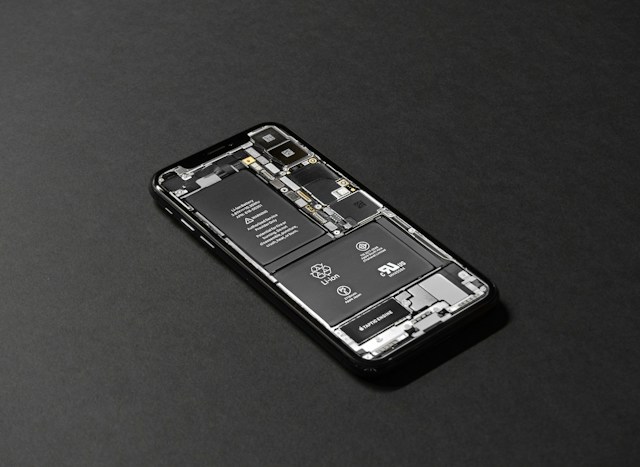Embedded systems are computer systems that contain several devices consisting of different software and hardware designed to perform a specific function within a large-scale electronic system. Real-time embedded systems are significant in cost saving, maintaining high quality and reducing the risk of product failure before final approval.
As the world welcomes the introduction of IoT (Internet of Things) products, such as smart speakers and voice-controlled lighting applications, real-time embedded systems are being embraced, leading to rapid escalation in the use of real-time operations. The assimilation of real-time embedded systems is changing the technology field, focusing on responsive, reliable and connective features.
In this guide, we will delve into the importance of real-time embedded system applications and primarily answer the question, “What are the examples of real-time applications of embedded systems?”. We will discover more about the advantages of real-time embedded systems and new development projects on the horizon. This guide will also explore the career opportunities available within the industry.
The Importance of Real-Time Applications of Embedded Systems
There has been substantial growth in the Global Real-time Embedded Systems market over the years, and the market is set to continue to proliferate. The demand for real-time embedded systems is on the rise. A wide variety of industries demand real-time embedded systems, particularly those related to medical, automation, e-mobility, communication, and control processes.
The Global Embedded Systems market was initially valued at $89.1 billion in 2021 and is set to reach $163.2 billion by 2031. The market is growing at a rapid CAGR rate of 6.5% from 2022 to 2031. The demand for real-time embedded systems is driving the growth of the industry. Research in relation to embedded systems is also on the rise, leading to a vast increase in development projects and advancements within the field.
Embedded systems are revolutionising the technical industry, where implementing these devices and operations is significantly changing lives for the better. Real-time embedded systems ensure tasks are executed under tight time constraints, producing real-time analysis data and securing reliable maintenance and performance. Industries such as medical, automotive and E-mobility heavily depend on real-time embedded systems, as correct functioning within a restricted time frame is crucial.
Now that we have considered the significant importance of real-time applications of embedded systems, we can delve deeper into the advantages embedded systems provide to various industries and customers.
5 Advantages of Real-Time Embedded Systems
Reliability - Real-time embedded systems typically offer consistent and reliable performance over long periods. The operation systems are designed to avoid failure and crashes, delivering constant reactions and data. This is essential for real-time embedded systems in industries such as the medical industry, as it is crucial that systems do not make mistakes and are reliable in performance to avoid harmful consequences.
Cost Effective - Hardware and Software components in real-time embedded systems are affordable and of low cost. This means the products can meet specific requirements on a low-cost budget, encouraging industries to adopt real-time embedded systems.
High Speed - High speed and accuracy are huge advantages that real-time embedded systems provide, as they can produce highly accurate, rapid responses. Quick and precise responses are essential in real-time embedded systems such as operations involved in automotive products, such as self-driving car control, which are vital in ensuring safety procedures are followed.
Versatile Size - Real-time embedded systems are manufactured to be adaptable and compact, which is highly advantageous for products and applications requiring little space, such as industrial equipment, IoT devices and GPS Fitness trackers in mobile phones.
Customisable - Another advantage of real-time embedded systems is great flexibility in design and manufacturing processes. This is highly important as this means specific functional requirements can be created for various products.
Types of Real-Time Embedded Systems
Real-time Embedded Systems come under three categories, depending on how crucial it would be if there were to be a violation of time constraints and reliability. These categories are as follows:
Soft - With soft real-time embedded systems, response failures would solely reduce customer experience; it would not be an urgent issue to resolve. If the system fails to meet the time constraint deadline, the system may recover independently or shut down its operation. An excellent example of this process is with real-time embedded systems such as game consoles and TV routers; failure to meet time constraints may happen, but they have minimal impact and consequence.
Firm - It is usually acceptable if a firm real-time embedded system fails to meet deadlines and time constraints. System failures do not lead to any harmful consequences. However, operating failures do diminish performance, which is unsatisfactory. Operations such as manufacturing systems fall into this category.
Hard - It is vital that time constraints are not breached. Time constraints must be consistently met. Any failures in operation are crucial and can have a substantial negative impact, and performance is diminished completely. Examples include autopilot systems or self-driving car control, where operation failure can potentially endanger human life.
Examples of Real-Time Applications of Embedded Systems
Now that we can understand the different types of real-time embedded systems, let’s delve into some of their most typical real-time applications:
1. MedTech
Real-time embedded systems in the MedTech industry are designed with software and hardware components tailored to meet specific requirements and functions in medical devices. These operations allow patients' health to be continuously monitored and supervised.
Medical Devices with incorporated IoT (Internet of Things) features are helping to manage the shortage of doctors and speed up medical processes. For example, IoT hardware operating systems are designed to effectively store patient analytics and data on the cloud that medical experts can assess and respond to easily.
Examples of medical-embedded technologies can include sensors, digital signal processors, microprocessors and memory for data storage. These technologies ensure that devices act in real time in highly critical circumstances where there is no room for error.
Examples of embedded systems in MedTech:
- Pacemakers
- Defibrillator
- Ultrasound scanners
- Insulin pumps
- Glucose Meters
2. Automotive/E-Mobility
The Automotive embedded systems industry is one of the fastest evolving industries today, as technology is continuously driving the industry forward towards new project developments, enabling vehicles to become more intelligent, efficient and connected. In 2022, The Global Automotive Embedded Systems market had an estimated value of $4497.78 million and is expected to reach 6839.04 million by 2028 and expand at a CAGR of 7.23%.
In the automotive industry, embedded systems control various vehicle functions, such as climate control, brakes, and engine management. The operations and systems work in unison to maximise a vehicle's overall performance and safety. IoT (Internet of Things) features have also incorporated devices that collect real-time data on location, driver behaviour and speed.
A wide variety of technologies are used in the automotive embedded system industry. These can include sensors, display units, microcontrollers and memory data storage, which all work together to provide a significant foundation of control that enables vehicles to obtain rapid response to different environmental factors.
Automotive Embedded system technologies can fall under several categories, such as safety and security, body electronics, powertrain and chassis control.
Examples of embedded systems in the automotive industry:
- Anti Lock Breaking System (ABS)
- Cruise Control System
- Airbag Control
- Automotive Night Vision System
- Rain-Sensing System
- Black box
3. CHS (Central Heating Systems)
Real-time embedded systems hold significant importance within the central heating industry, as they are the main driving force behind the power of thermostat controls and are responsible for adjusting temperatures.
Embedded systems within central heating controls are designed in several different ways to execute temperature control, which is crucial when dealing with temperature-sensitive goods. Embedded systems convert chemical energy into thermal energy, produce heat, and provide temperature control to building spaces. Temperature control involves the prevention of overheating, which is largely beneficial for accurate heat regulation and energy savings.
IoT (Internet of Things) features have revolutionised the Central Heating System industry. Components such as HVAC IoT sensors, AI-powered heating solutions, and cable setups contribute to the development of intelligent and connected heating solutions. Solutions can include reducing energy consumption, cost-effectiveness, accurate real-time data and temperature control.
Examples of embedded systems in CHS:
- Smart Thermostats
- Underfloor Heating Systems
- Boiler Control Systems
- Radiator Control Systems
4. Industrial Automation - Manufacturing
Industrial automation falls under two main categories, machine control and machine monitoring, usually implemented in factory systems. Embedded systems are essential in monitoring and executing maximum performance of industrial processes and controlling various factory systems and operations. Embedded systems in Industrial automation are set to become an essential part of the automation field, encouraging businesses to grow.
Embedded systems conduct specific functions such as temperature control, control of motors and valves, and managing network facilities and equipment. Continuous monitoring of machinery encourages performance optimisation. Tracking of machine health also lowers maintenance fees and ensures the equipment is of high quality, as rapid human intervention can be implemented as real-time data is received.
Embedded systems in industrial automation are heading towards implementing concepts of IoT (Internet of Things) devices. These devices collect sense, control and transmit data and enable connection with other devices, enabling remote monitoring and optimisation.
Examples of embedded systems in Industrial Automation:
- Machine Control Systems
- Automation Computers
- Machine Monitoring systems
- Industrial IoT Devices
5. Fitness Trackers
Fitness trackers are common real-time applications of embedded systems. Real-time embedded systems are revolutionary for wearable technology as advancements increase intelligence and efficiency.
Devices usually contain hardware and software technologies, such as sensors, to detect fitness factors such as heart rate, step count, and sleep patterns. Real-time embedded systems collect data on physical activity and environmental factors and provide real-time reports that are accessible at any time, allowing users to gain insightful information on their fitness.
Real-time embedded systems are also essential for power management, as they are important in maintaining battery life in line with optimal performance. Technologies such as dynamic voltage scaling and power gating adjust voltage supply based on workload and turn off unused components, leading to high energy efficiency.
Examples of embedded systems in fitness trackers:
- Accelerometers
- Heart rate monitors
- Gyroscopes
- Pedometer
Up and Coming Developments In Real-Time Embedded Systems - IoT
The Internet of Things (IoT) has become important as new technological developments begin to revolutionise the industrial sector. Take a look below to gain an insight into new project developments in sight.
AI
Developments in embedded systems with AI features are currently on the horizon. AI technologies significantly quicken data analysis and decision-making, meaning data from embedded system sensors can be analysed and processed in real-time.
AI project developments are also starting to incorporate digital twin technology. This involves creating a digital copy of physical objects and processes, where AI can effectively test and arrive at efficient solutions. Developments in AI would be highly beneficial in sectors such as MedTech and the automotive and automation industries, where quick decision-making and solutions are crucial.
Edge Computing
Edge computing is a technique used to collect and process data from a device without using separate applications. This framework can reduce network delays and response times. Edge computing technology significantly lowers the demand for servers and processing data software, allowing the use of cloud resources.
Developments in edge computing would significantly develop sectors within the MedTech, Industrial Automation and Automotive sectors, where low latency, quick response times and reliability are essential.
Security - Blockchain Technology
There has been significant development in securing IoT devices and tackling the risk of cybersecurity attacks and cybercrime issues as the number of networks of connected devices grows.
Blockchain technology ensures that cyber vulnerabilities such as tampering are avoided. There are also project developments in IoT that focus on monitoring networks and devices, where suspicious activity is recognised, and the risk of cybercrimes is reduced.
5G Technology
Wireless networks are commonly used in IoT devices. Project developments aim to incorporate 5G technology, which offers the quickest speeds for wireless networks. Faster performance and reduced latency improve IoT sensors response times and improve connectivity issues.
Developments in 5G technology will significantly benefit MedTech and the automotive and automation industries, where quicker response times and connectivity are essential.
Recent Real-Time IoT Developments
Here are some examples of the most recent real-time IoT developments that are revolutionising the embedded systems industry:
- Voyager Parking Management System - Secure Parking recently introduced a “voyager” parking solution. The award-winning parking management system uses developments in IoT technology to create an easy parking experience. Developments in software and systems have massively contributed to the embedded systems industry.
- eHat - IoT developments have led to considerable advancements in health and safety. The eHat is a video/audio system that connects to mobile devices, where essential instructions can be communicated successfully in industrial environments, particularly construction.
- Parkinson’s Kinetigraph - A recent development in IoT is demonstrated through the Parkinson’s Kinetigraph, a wearable watch that patients can use to send data from the watch to their doctor via the cloud. The IoT feature “smart dock” provides a reliable assessment of symptoms, such as tremors and dyskinesia, and enables doctors to access data anytime.
Recent data shows that over 25,000 patient reports have been accumulated, which is equivalent to over 3 million recording hours, suggesting that new IoT-embedded features are beginning to revolutionise the MedTech industry.
Job Opportunities Within Embedded Systems
The huge demand for real-time embedded system applications means there are several job opportunities within the field of embedded systems, particularly related to industries such as MedTech, Automotive, and Industrial Automation Industries. Potential job opportunities could include:
- Mechanical Design and Development Engineer - This role involves designing, developing and testing mechanical systems and resolving any issues.
- Medical Systems Engineer - This involves maintaining and developing medical systems.
- Embedded Software Engineer - An embedded software engineer designs and develops software for specific embedded devices.
- Embedded Hardware Engineer - This role involves designing and developing hardware systems that are embedded in large electronic systems.
- Embedded Firmware Engineer - Firmware engineers design and install firmware systems and troubleshoot and adapt them when required.
- Test Automation Engineer - This role involves testing software while it is being developed and designing systems that run automatic tests.
- Cyber Security Engineer - A cyber security engineer's role involves identifying vulnerabilities and designing tech solutions against cybercrime.
- Project Management - A project manager ensures that all projects run smoothly and meet tight deadlines and budgets.
The Verdict
The real-time applications of embedded systems have become a driving force in reshaping various industries, offering unparalleled advantages that contribute to efficiency, reliability, and connectivity.
The categorisation of real-time embedded systems into soft, firm, and hard types highlights the criticality of time constraints and reliability in different industries. Illustrating real-time embedded systems' varied and vital roles in enhancing performance and safety.
Recent developments in real-time IoT applications showcase the transformative impact of embedded systems on everyday life. These examples reflect real-time embedded systems' continuous evolution and adaptation to address emerging challenges and opportunities.
In essence, the real-time applications of embedded systems have not only become integral to the functioning of critical industries but are also driving technological advancements that promise a future marked by innovation, efficiency, and connectivity.
Professionals in Embedded Systems Recruitment
At Amoria Bond, our goal is to provide dependable assistance to professionals within the embedded systems industry. Our specialist recruitment experts are devoted to connecting organisations to expert talent across the field as we continue to use our extensive network to deliver outstanding results.
Contact us today to partner with us and see how we can support you.






